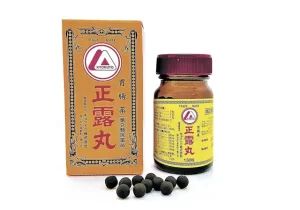Difference between split and subunit influenza vaccines
Difference between split and subunit influenza vaccines
Difference between split influenza and subunit vaccines. Now everyone is looking forward to the launch of the COVID-19 vaccine as soon as possible to end the epidemic, but the ever-calling COVID-19 vaccine is still half-hidden and has not been officially launched. In order to prevent the superimposed infection of the COVID-19 and the flu, people’s demand for flu vaccines has increased sharply. Many outpatient flu vaccines have appeared in “second light”, and it is still difficult to find flu vaccines everywhere.
Because of the shortage of supply, many vaccination clinics are afraid to make appointments in advance. They usually call on the spot when the vaccines are available, and they will not wait until they expire.

In vaccination work, people often ask: Doctors, influenza vaccines have trivalent quadrivalent, live vaccines, dead vaccines, split vaccines and subunit vaccines. What is the difference between so many influenza vaccines and which is better?
In order to let everyone understand the characteristics of different flu vaccines, let’s start with the classification of flu vaccines!
1. Classification of influenza vaccines:
- According to the process: divided into live attenuated vaccines and inactivated vaccines;
- According to the type: divided into split vaccine and subunit vaccine;
- According to the components: divided into trivalent influenza vaccine and quadrivalent influenza vaccine;
- According to specifications: divided into child type and adult type (0.25ml is child type, 0.5ml is adult type).
This year, there are 11 influenza vaccines from 9 manufacturers in the influenza vaccines used in some countries. Except for a newly marketed influenza vaccine, the others are all inactivated influenza vaccines.
Judging from the influenza vaccines launched in some countries this year, if you are using a live attenuated vaccine, there is only one trivalent influenza vaccine; if it is an inactivated vaccine, there are trivalent and quadrivalent influenza vaccines. Among them, there are trivalent inactivated vaccines. There are two types of split vaccine and subunit vaccine. The quadrivalent inactivated vaccine only has the split vaccine; the child type has only the trivalent influenza vaccine, and the adult can choose the trivalent or quadrivalent influenza vaccine.
Therefore, so many vaccines, in fact, there are only trivalent, quadrivalent, or inactivation and attenuation, inactivation and lysis and subunits, flu vaccines of different specifications have different applicable ages.
Since trivalent and quadrivalent influenza vaccines, inactivated and attenuated live vaccines are familiar to everyone, let me take a look at influenza split vaccines and subunit vaccines.
2. Influenza split vaccine
The split influenza vaccine is developed on the basis of the first generation of influenza vaccine-influenza whole virus inactivated vaccine. In the 1940s, the first inactivated chicken embryo whole virus vaccine was put on the market. At that time, the whole virus inactivation process was immature, and the adverse reactions after the whole virus vaccination were more serious.
In 1968, Sanofi Pasteur selected an appropriate lysing agent to lyse the influenza virus on the basis of the inactivated vaccine against the whole influenza virus to remove the virus’s own macromolecular proteins and nucleic acids, and only retain the active ingredients HA and NA of the antigen. And part of NP and M prepared surface. To use a vivid analogy, split vaccine is to dismember the virus, then make the surface antigen protein (face-face) of the virus and part of the remaining corpse into a vaccine. This is the second-generation influenza vaccine.
3. Influenza subunit vaccine
In 1976, the third-generation influenza vaccine-influenza subunit vaccine was successfully developed. It is based on the split vaccine, which removes the internal protein of the virus and only contains high purity HA and NA components. A metaphor is that after the influenza virus is dismembered, only the surface antigen (face-face) of the virus is selected to make a vaccine. Compared with the split vaccine, the subunit vaccine has a higher purity, a smaller molecular weight and a lower incidence of adverse reactions. .
Because the human body’s immune system is an identification system, a surveillance system that mainly looks at the face, as long as the dismembered influenza virus surface antigen form (face) is let the immune system meet first, get familiar with the face, and then meet the long face next time. If the same virus comes in, it will quickly activate the immune system to eliminate the virus.
4. What is the difference between a split influenza vaccine and a subunit vaccine
Influenza split vaccine and subunit vaccine are both inactivated vaccines. Due to their different processes and ingredients, there are also differences in immunogenicity and safety.
Split Influenza vaccine
- Main ingredients: Antigen active ingredients: HA and NA; Matrix protein and nuclear protein components: NP and M
- Other ingredients: Lysis agent
- Immunogenicity: Larger molecule, immunogenicity, better immune memory
- Safety: Low adverse reactions and good safety
Subunit Influenza vaccine
- Main ingredients: Mainly to purify the surface antigen components: HA and NA, remove the internal protein of the virus, and have high purity.
- Other ingredients: Lysis agent or denaturant, adjuvant
- Immunogenicity: Small molecule, low immunogenicity, poor immune memory
- Safety: Very low adverse reactions and better
5. Which is better and how to choose
Whether it is a split vaccine or a subunit vaccine, the influenza vaccine not only has good safety and low side effects compared with the first-generation influenza whole virus inactivated vaccine, but also can achieve good effects in terms of immunogenicity, especially The influenza subunit vaccine can achieve a more ideal effect after being vaccinated under the enhanced effect of adjuvant. However, the production cost of subunit vaccines is relatively high, which is not conducive to popularization in mass vaccination.
In the case of relative shortage of influenza vaccine, no matter which kind of influenza vaccine is vaccinated, the effect of preventing seasonal influenza can be achieved. Please have the vaccine to vaccinate in time and protect it early.
At the same time, it is worth reminding that, according to relevant sources, there are currently sufficient outpatient influenza vaccination in individual cities or towns. People in need can consult by phone or make an appointment online. For online appointment, you can follow the “Vaccine Know-How” official account, and make an appointment in the “Vaccine Service” module in the lower left corner.



